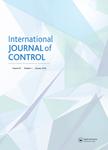版权所有:内蒙古大学图书馆 技术提供:维普资讯• 智图
内蒙古自治区呼和浩特市赛罕区大学西街235号 邮编: 010021

作者机构:Department of Automatic Control and Systems Engineering University of sheffield sheffield S1 3JD Mappin Street United Kingdom
出 版 物:《INTERNATIONAL JOURNAL OF CONTROL》 (国际控制杂志)
年 卷 期:1997年第67卷第4期
页 面:507-527页
核心收录:
学科分类:0711[理学-系统科学] 07[理学] 08[工学] 070105[理学-运筹学与控制论] 081101[工学-控制理论与控制工程] 0811[工学-控制科学与工程] 0701[理学-数学] 071101[理学-系统理论]
主 题:Predictive control systems
摘 要:This paper considers the extension of the standard GPC algorithm to include input rate, magnitude and output constraints using the Quadratic Programing (QP) approach on a derived nonlinear multivariable anaesthesia model comprising simultaneous control of muscle relaxation (paralysis) and unconsciousness (in terms of blood pressure measurements). Simulation results, which are presented, analysed and discussed, demonstrate the superiority of the extended version in the deterministic and stochastic cases even when low output prediction horizons are chosen, and also the great flexibility with respect to choosing the limits on the manipulated as well as the output variables. The study also reveals that when heavy external disturbances occur, the algorithm, which combines input and output constraints, performs better than either the unconstrained one or the one that includes only input constraints. Under extreme conditions, the same algorithm reduces to an algorithm with only input constraints when the phenomenon of constraints incompatibilty occurs.